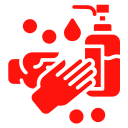Know Your Cough
Anatomy of a cough
Nerve endings abound in the lining of our respiratory tract, from the back of our throat to the depths of our lungs. When they are inflamed, nerve impulses are sent to the brain’s cough center, activating a series of coordinated muscle activities that result in a cough. This is referred to as the cough reflex.
The cough initially starts with a gasp pulling a deep breath into the lungs. The glottis then snaps shut, covering the trachea or windpipe. The third stage is the forceful contraction of the muscles of the chest, abdomen, and diaphragm. These muscles softly push air from the lungs up via the nose and mouth during normal breathing. When the glottis is closed, the air cannot escape, causing considerable pressure to build up in the airways. Finally, the glottis opens, and air rushes out. With a vigorous cough, the air escapes at nearly the speed of sound, producing the barking or whooping sound we call a cough.
Knowing your cough
If a doctor determines that a cough is the result of a typical cold or flu, the common suggestion is to rest, drink lots of fluids, and let it run its course. Coughs of this type usually go away after 12 weeks.
A cough produced by a viral illness lasting more than a couple of weeks would almost certainly necessitate medical care. A chest X-ray may be ordered by the doctor, and a sample of phlegm may be submitted to a laboratory for investigation to discover what is causing the illness.
The patient may be asked to breathe in and out of a tube connected to a machine, which allows the doctor to evaluate whether the airways are blocked (this test is known as spirometry), which is prevalent in asthma or emphysema. If the patient is diagnosed with asthma, he/she may be prescribed asthma medication. A doctor may occasionally recommend a patient to a lung, ear, nose, and throat specialist (ENT).
Key facts you should know
Coughing is a natural and necessary reflex that protects your airway and lungs from irritants, germs, mucus, and dust.
Coughing can send air and particles out of your lungs and throat at speeds approaching 50 miles per hour.
Some pathogens use coughing to transmit to new hosts.
Coughs can be caused by a variety of factors.
A cough that does not go away or is accompanied by other symptoms such as shortness of breath, mucus production, or bloody phlegm may indicate a more serious medical problem. A doctor is required for an uncommon and prolonged cough.
Some coughs only tend to occur at night.
Phases of Cough
01
Inhalation Phase
02
Compressive Phase
03
Expiratory phase
Who is more prone to have a cough?
Vape
Smoke substances (like tobacco or marijuana)
Suffer from chronic ailments, particularly those affecting the lungs or nervous system.
Coughs can be caused by a variety of factors.
Are children. Kids tend to fall sick often, especially when they go to school or daycare.
How can coughing be prevented?
Having strong immune defenses will help you fight off the next cough, cold, or virus that comes your way. Sleep is one of the most important components of a good immune system that fights colds and flu. Poor quality or insufficient sleep has been shown to reduce resistance to illness, so having your sleep hygiene habits dialed in will help you face the outside world with confidence, along with a few handy hygiene practices.
Some of the most basic and effective methods for avoiding person-to-person or object-to-person transmission are also the simplest. A few types of coughs can be avoided by limiting irritants that cause you to cough. You can help prevent coughs caused by infections by doing the following:

Getting immunized against influenza, COVID-19, and pneumonia.

Staying away from sick people.

Try not to touch your eyes, nose, or mouth.

